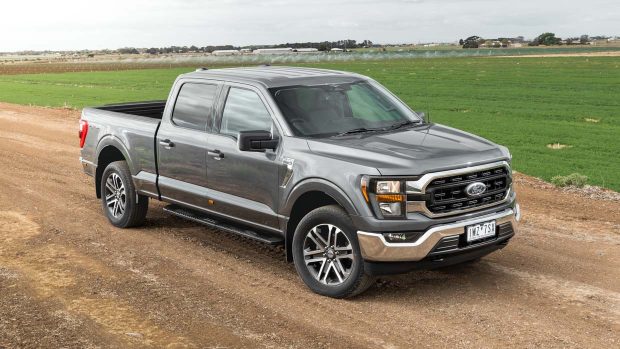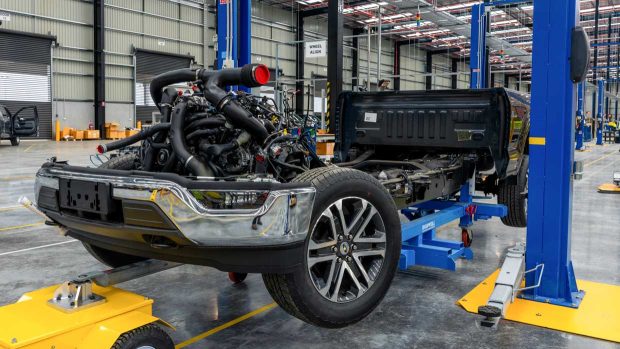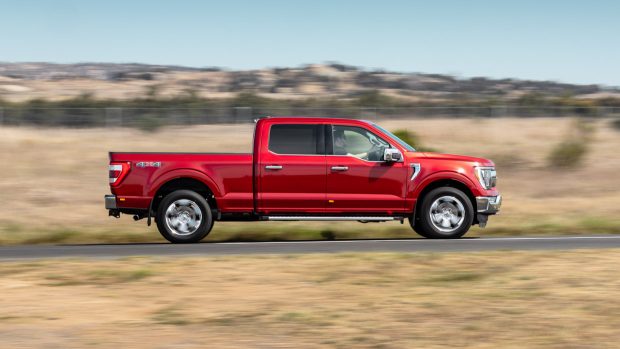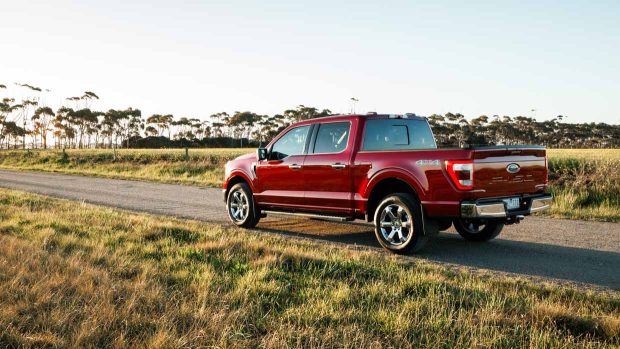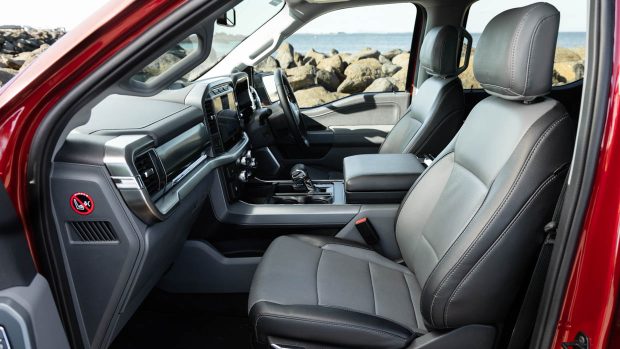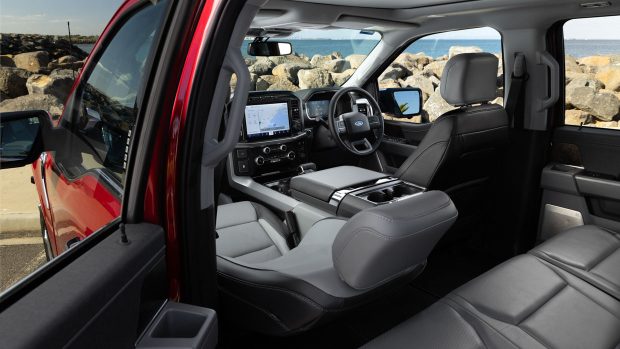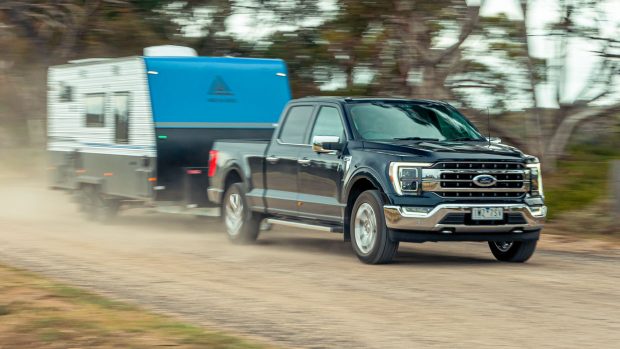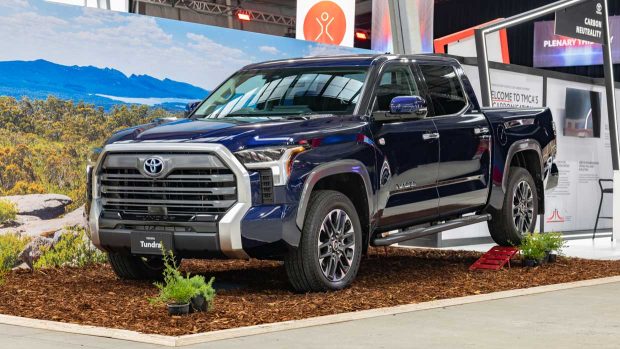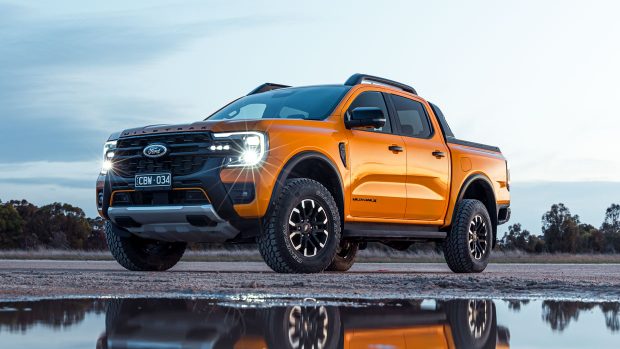-
Car Reviews
- All reviews
- Midsize SUVs
- Small cars
- Utes
- Small SUVs
- Large SUVs
- Large cars
- Sports SUVs
- Sports cars
- Vans
Latest reviews
- Car News
-
Car Comparisons
Latest comparisons
- Chasing Deals
The full size Ford F-150 pick-up truck is about to hit Australian shores; here are five things to know about the American icon
The anticipated debut of the Ford F-150 on Australian shores is almost here, with first deliveries due in November.
We’ve just been on our first full drive of the American icon on Australian soil – you can check out our detailed video review or written review – but in the mean-time, here are the top five things to know about the latest entrant into Australia’s crowded ute market.
After being manufactured in left-hand-drive in the US, the F-150s are shipped to our shores before they are converted to right-hand-drive and sold in Australian showrooms.
But this isn’t a simple switch from left-to-right, with vehicles being fully re-engineered on a dedicated production line in Victoria.
The conversion is taken care of by a foreign engineering firm RMA Automotive which works closely with Ford Australia’s local development team, with over 500 new or modified parts required for the conversion.
The re-engineering work is exhaustive and this is the first time Ford has approved a remanufacturing process like this anywhere in the world, with the brand signing off on all of the pickups to ensure they are up to standard and ready to be granted Ford’s standard five-year, unlimited-kilometer warranty.
It’s worth noting that the Ram 1500 and Chevrolet Silverado are also converted locally by the Walkinshaw Group, with 300 units of Toyota’s incoming Tundra model also confirmed for re-manufacturing before they are given to selected customers to undergo real-world testing.
The F-150 will come to Australia in two grades from launch including the entry level XLT and the top-spec Lariat. Both grades will be available in long- and short-wheel-base versions.
In terms of confirmed pricing for the F-150, the XLT comes in at $106,950, with the top-spec Lariat coming in at $139,950, both before on-road costs.
You will need to spend an extra $995 for the extra 300mm of tub space in the long-wheel-base in either grade – the SWB includes a 1676mm ute tub while the LWB has a larger 1981mm tub.
However, don’t let ‘short-wheel-base’ fool you – even in this spec, the F-150 measures in at 5.9-meters in length. The long-wheel-base is 6.2-metres long, with the extra 300mm in the tub, making it almost a full meter longer than the Ford Ranger.
All F-150s employ a full-time four-wheel-drive system and each are powered by Ford’s 3.5-litre twin-turbo-petrol V6 EcoBoost engine making for 298kW and a massive 678Nm of torque, coupled with a 10 speed automatic transmission and claiming an average fuel economy of 12.5L/100km.
Key features for the XLT include:
Key features the Lariat adds:
Key safety features and driver assistance (XLT and Lariat):
Key safety features and driver assistance (Lariat only):
In terms of value for money, Chasing Cars’ contributor Iain Curry said in his review: “this is a massive re-engineering project that must have cost an absolute fortune for Ford Australia to do. That translates to an incredible feeling cabin that does look and feel factory good, and the drive as well – very impressive”.
While the direct cost conversion from buying an F-150 in America versus Australia does see our market paying more, it’s also worth noting that we do score some extra features on our local models that are optional or unavailable overseas, not to mention that Australian vehicles are packed to the brim, with minimal optional extras.
The F-150 comes equipped with a 4500kg-rated tow bar with a 70mm ball and integrated trailer brake controller.
Chasing Cars was told that the American set up for towing did not meet Australian requirements so it has been fully remanufactured as part of the comprehensive Australian re-engineering process to meet the stricter Australian standards.
Additionally, both XLT and Lariat grades come equipped with ‘Pro Trailer Back-up Assist’ – essentially allowing you to use a toggle in conjunction with the rear view camera to direct the trailer where it needs to reverse – the driver controls the throttle and brakes, while the steering is taken care of based on your toggle inputs.
Payload capacity for the F-150 depends on grade:
As for the F-150’s kerb weight:
The F-150 currently has two – and will soon have three – key rivals in Australia. This includes the RAM 1500 and Chevrolet Silverado, which are both currently on sale in Australia.
They will soon be joined by the Toyota Tundra, which currently has a Hybrid undergoing real-world evaluation ahead of full scale production approval.
While the Toyota is powered by a hybrid-assisted 3.5-litre twin-turbo petrol V6 (236kW/790Nm), the RAM 1500 (291kW/556Nm) and Chevrolet Silverado (313kW/624Nm) are both powered by petrol eight-cylinder engines, but the F-150’s torque figure beats both V8s.
While the F-150 has a V8 option in the US, this won’t be available locally.
MY2023 F-150s will begin arriving this November.
Unsurprisingly, Ford has previously stated it wants the F-150 to “knock it out of the park”, but didn’t share expected sales volumes. However, the RMA Automotive facility where the pickup is remanufactured for RHD has the capacity to produce around 5000 annually.
With pickup sales booming in Australia – and the F-150 having clocked more than four decades as America’s most sold vehicle – it won’t be surprising to see high-demand for the pickup truck in local showrooms.
The Toyota Hilux is currently the best selling vehicle on Australian roads, closely followed by the Ford Ranger in a hotly contested segment, with Ranger wait times currently struggling to keep up with demand.
Latest news
About Chasing cars
Chasing Cars reviews are 100% independent.
Because we are powered by Budget Direct Insurance, we don’t receive advertising or sales revenue from car manufacturers.
We’re truly independent – giving you Australia’s best car reviews.
